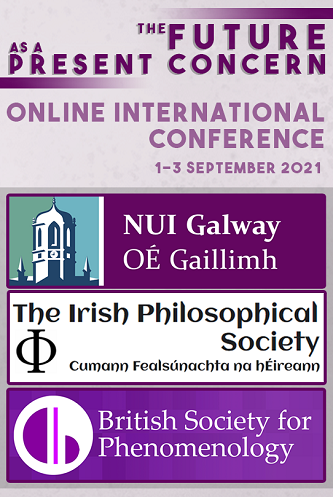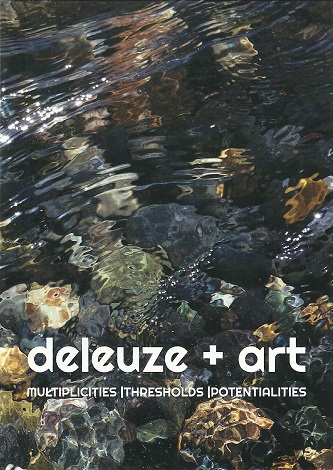PAPERS

‘The Dark Knight and the rebirth of tragedy out of the spirit of cinema’ (2023)
The Joker of The Dark Knight (2008) is the essence of Nietzsche’s Dionysus.
Accordingly, we can trace the forces of tragedy in the film back to Nietzsche’s The Birth of Tragedy (1872).
However, Nietzsche is not simply concerned with the birth of tragedy, but also its death, then rebirth. In this way, The Dark Knight is a lens on The Birth of Tragedy and an exemplar par excellence of the rebirth of tragedy through cinema.
Read some more on ‘The Dark Knight and the rebirth of tragedy out of the spirit of cinema’

‘Reading Zarathustra as a dramatization of the philosophy of the free spirit series’ (2023)
Nietzsche’s Thus Spoke Zarathustra (1883-5) dramatizes the philosopher’s preceding free spirit series: Human, All Too Human (1878-80), Dawn (1881), and the original edition of The Gay Science (1882). This is to say, concepts from and the trajectory of the philosophy of the free spirit series are selected and interpreted through the images, the poetry, the lyrical milieu of Zarathustra.

‘Polysemous futurity in the cinematics of Cloud Atlas and Nietzsche’s Beyond Good and Evil‘ (2021)
Cloud Atlas (Wachowskis, Tykwer | 2012) has a narrative that sees futurity as polysemous – a perspectival simultaneity of stasis and flux; anticipation, destiny, and novelty; circularity, progress, revolution, and decay.
To make this argument I employ Nietzsche, expressly Beyond Good and Evil (1886), sub-titled as it is Prelude to a Philosophy of the Future. Such resonance with the film, in turn, provides a lens on Nietzsche’s text.

‘The Death of God (At Five in the Afternoon)’ (2019)
The grandfather digs in the desert with a shard of rock. Beneath a bruised sky, the old man all the while laments the death of god. ‘Blasphemy reigns in Kabul’ he murmurs; it is ‘as if God had died.’ Thus the final sequence of Samira Makhmalbaf’s At Five in the Afternoon (2003): the old man crouched in the sand, digging a little grave for his son’s dead baby, all the while bemoaning the death of god. This paper explores Makhmalbaf’s film through the idea of the death of god from Nietzsche’s The Gay Science.
Read some more on ‘The Death of God (At Five in the Afternoon)’

‘Ozu and Signs: Deleuze after Nietzsche’ (2019)
Ozu is central to Deleuze’s Cinema books, a director who ungrounds temporal, spatial, and human co-ordinates creating maximal cineotic energy.
And for Nietzsche, such forces affirm ‘multiplicity’, ‘change’, and ‘becoming’ (TI, ‘Reason’: 1). These are the three essential signs of Ozu’s Late Spring.
This paper puts Ozu, Deleuze, and Nietzsche into play to ask the questions – what is a sign? what is a cinematic sign? what are the relations between cinema, philosophy, and signs?
Read some more on ‘Ozu and Signs: Deleuze after Nietzsche’

‘Look Again: Kiarostami – (Deleuze) – Ozu’ (2019)
In 2003 the Iranian director Abbas Kiarostami released a film called Five. However, the film also has two subtitles ‘5 Long Takes’ and ‘Dedicated to Yasujiro Ozu’. So it would seem Kiarostami is evoking an association with another filmmaker’s films: Ozu.
However, Five is not simply a composition of five long takes and Ozu’s films are not even constituted by long takes.
So the question: can we affirm Kiarostami’s dedication to Ozu?
Read some more on ‘Look Again: Kiarostami – (Deleuze) – Ozu’

‘Twilight of an Idol, or How to Film-Philosophize Bowie’s “★” with Deleuze after Nietzsche’ (2018)
Gilles Deleuze – fresh from his Cinema books – made some passing observations on a relatively new audio-visual form: music videos. ‘For a moment they bordered on something connected with thought’ and ‘could have become a really interesting new field of cinematic activity’, but were ‘immediately… taken over by marketing jingles’ and ‘organized mindlessness’…

‘Little Deviant Acts: Claire Denis, Trouble Every Day and Nietzsche’s vehemence of drives in Daybreak‘ (2017)
The exploration of drives in Trouble Every Day is also the fundamental question of Friedrich Nietzsche’s Daybreak (1881). This is Nietzsche’s unsettling proposition – ‘that one desires to combat the vehemence of a drive at all… does not stand within our own power; nor does the choice of any particular method; nor does the success or failure of that method’ (D 109).

‘Nietzsche and Doctor Who – the serial form and the three teachings of Zarathustra’ (2016)
This paper proposes an encounter between Nietzsche and the Doctor. It explores the resonances between the eponymous tv show and Thus Spoke Zarathustra. The programme rises to the challenges of, I will claim, the three central teachings of Nietzsche’s book. These three teachings are the interweaving trefoil knot of the overhuman, will to power, and eternal recurrence.

‘Deleuze and Doctor Who – univocity, multiplicity, and cineotic series’ (2016)
Doctor Who is an example par excellence of difference and repetition: the Doctor is one as a multiplicity of beings; and spatio-temporal events are endlessly explored, problematized, and ungrounded. Running – on and off – for over 50 years, the series is composed of serials and episodes, images and narrations creating narratives exploring time travel, many worlds and carnal states. Such is the aim of this paper, to enact a conversation between the Doctor and the philosophy of Deleuze.
Read some more on ‘Deleuze and Doctor Who – univocity, multiplicity, and cineotic series’

‘After the flood: Deleuze and the Arab Spring’ (2011)
Events taking place in the Arab world are spontaneous yet sustained moments of revolution. Tunisia, Egypt, Libya, Syria, Yemen, Bahrain, etc., localised singularities flowing across Northern Africa and the Arabian Peninsula. These becomings seem political manifestations of Deleuze and Guattari’s concept of the rhizome. Yet ‘[t] here are knots of arborescence on rhizomes… rhizomatic offshoots in roots’ This paper will encounter such moments during the Arab Spring.
Read some more on ‘After the flood: Deleuze and the Arab Spring’

‘4 Deleuzes, or, Afterthoughts on “Cinema, chronos / cronos: becoming an accomplice to the impasse of history”‘ (2008)
This paper explores the relationship between film and history in Deleuze’s Cinema books. This does not simply mean the relationship between film and the history of cinema, though this too is considered. Rather, the crucial focus is the relationship between film and history in general, which has to large extent been ignored in secondary commentaries.

‘”Watch out! Recollection”: the spectre of impossibility in Kaneto Shindo’s Children of the Atom Bomb‘ (2007)
It was not until the end of the occupation that Japanese filmmakers could at last begin to explore the effects of the atom bomb on Japan. Yet even here the ‘spectre of impossibility’ arose: given the immensity of the event, surely any attempt would be inadequate? One of the very first films to attempt to overcome this problem was Kaneto Shindo’s Children of the Atom Bomb (1952).